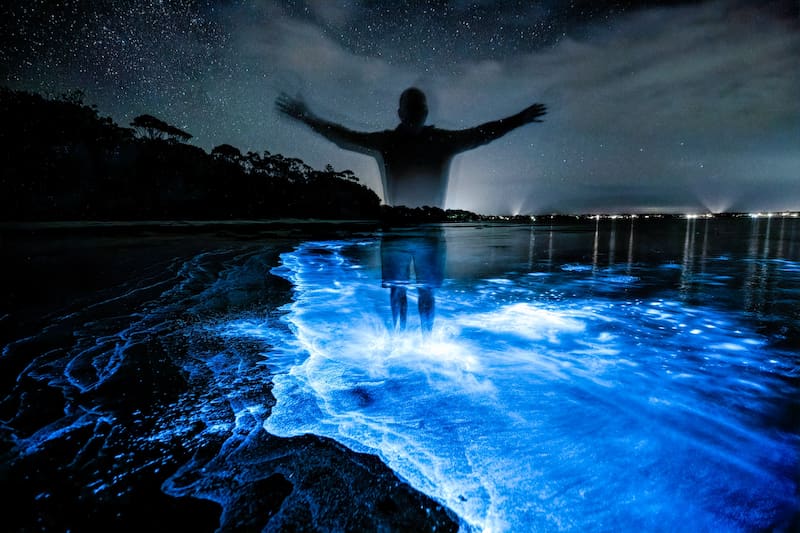You do pay the price of practise and that means sitting quietly by yourself and watching your mind quiet down for around fifteen minutes. At that point you should start seeing pastel colors.
Continue in this manner as long as you can and petrhaps you will be shown somethng or nothing at all.
THE OTHER SIDE has shown me once the INNER SUN literally breakng it egg shell and flooding me breifly with its ultrviolet radiance. I have also been shown the MATRIX more thzn once.
The obvious energetics of the INNER SUN was phyically impossible but still there it was.
The MATRI glowed darkly with a deep purple radiance in three dimensions with star like points scattered about likely representing scale shifted other matter.
What is Makyo? 11 Examples of Spiritual Delusion
September 1st, 2023
Guest writer for Wake Up World
Now, here’s the thing: I’m not a zen practitioner, nor do I necessarily write for an audience of zen enthusiasts (however, if you are one, that’s awesome!). But there’s a certain term that is quite unknown at the time of writing, which I hope comes more into the mainstream:
Makyo.
If you’re a sincere spiritual practitioner interested in truth over illusion, makyo is a term you need to familiarize yourself with.
If your focus on the spiritual awakening path is to find that which is abiding, doesn’t come and go, and is the ever-present silence beneath the noise – in other words, that which is your True Nature – you’re in luck. Learning about makyo can help tremendously.
On the other hand, if you’re into stuff like crystals, angels, cosmic downloads, achieving special states of altered consciousness, and so on, that’s fine, but this article might be a bit confronting or irrelevant to you at this point on your journey.
What is Makyo?
Makyo (or Maky?) is a term in the Zen tradition that refers to the spiritual delusion of clinging and attaching to the mental phenomena that come up during practices like meditation.
The problem with taking special interest in the various hallucinations and visions that arise in our spiritual practice, according to ancient Zen philosophy, is that it causes us to delude ourselves into believing that we’re extra special or have even reached an enlightened state of consciousness. Such assumptions can easily produce a kind of ego inflation that results in problems like spiritual narcissism and spiritual materialism.
In the words of John Daido Loori, who was the abbot of Zen Mountain Monastery,
Sometimes during sitting people have what we call makyo: a vision or hallucination. Other times it’s a smell or sound. Students often think this means they’re enlightened–particularly if the image is related to Zen, like the Buddha sitting on a golden lotus–and they immediately run off to dokusan (a private interview with one’s teacher) to get it confirmed. The teacher will usually listen and then say something like, “Maybe you’re not sitting straight. Sit straight. Don’t worry, it will go away.” It doesn’t matter whether we attach to a regular thought, or to the thought of enlightenment. Whatever it is, it is still attachment.
(Text in brackets my own)
Why Makyo Can Feel Like a Bitch Slap
As we can see, makyo is all about attachment, and in particular, spiritual attachment, which is a trap and pitfall that we can easily fall into on the spiritual path, especially in the West, where being unique and important is seen as a badge of success and honor.
The irony is that the moment the ego, the “me” starts fixating on a special experience – maybe a vision of an ascended master or an experience of clairaudience – the moment it has appropriated spirituality for its own benefit, that is, to feel special and separate.
And as we know, the ego is at the root of our suffering.
Of course, it’s important to acknowledge that on a human subjective level, we are special. We all have our own gifts, talents, and aptitudes that differentiate us from others. I’m not denying that.
But on a deeper level, the level that precedes the ego, the realm of Spirit or Consciousness, attachment to any experience that reinforces the ego is a distraction and delusion.
Does the concept of makyo feel like a bitch slap yet?
Makyo is a term and core philosophy that essentially says,
“Hey there! Remember all that amazing stuff you experience during meditation or on retreat – and all those visions of angels, past life recalls, and psychedelic fantasies? Yeah … well, they’re ultimately irrelevant. They’re just experiences that come and go. They’re passing mental phenomena. If you want to find out who you truly are, don’t be attached to them. Okay?”
The Good and the Bad News About Makyo
The good news about makyo is that if, for some reason, you find yourself here on this spiritual path and you do not have special experiences, that’s okay.
Suppose you don’t have amazing visions, lucid dreams, messages from spirit guides, kundalini awakening, extrasensory gifts – and all that jazz … oh well! In reality, none of that stuff matters in the end. It can be helpful and illuminating to have some of these experiences, don’t get me wrong. But if your priority on the spiritual path is to awaken to your True Nature and experience the truth of reality, all that stuff is basically irrelevant.
Certainly, having ascended beings give you special messages might feel funky. It might continue to motivate you, keep you engaged in the spiritual search, or externalize disowned internal guidance in a magical way. But at the end of the day, if you’re not having any of these special experiences, it doesn’t ultimately matter.
That’s the good news – it’s a relief to know that special-looking experiences aren’t ultimately important when all is said and done! So you can drop that burden from your shoulders. You don’t need to keep up with the “in crowd” of “super-special-spiritual people” anymore. Phew!
The bad news is that if you do, for some reason, identify with the super-special-spiritual people crowd and have had a lot of amazing spiritual experiences with which you’re strongly identified, the concept of makyo may inevitably feel threatening.
In reality, there is no “good or bad” news here; that’s just a black-and-white labeling of the mind. Maybe “comfortable and uncomfortable” is better to use here.
So the uncomfortable news is that if you’re interested in going beyond these spiritual experiences and labels and finding out who you truly are, you’ve got to drop your attachment to all the stuff that makes you feel extra special and elevated.
And let’s be honest here; there’s a lot of spiritual ego on the spiritual path. I’ve experienced it. You’ve experienced it. We’ve all experienced it.
Crisp and cutting truth is of utmost importance here. Reflect on whether you’re interested in what is true or whether you’re interested in continuing to live under the spell of the mind that has used spirituality to reinforce the very thing authentic spirituality is out to dismantle: the ego. Either way is fine – that’s just how life is choosing to live itself.
11 Examples of Makyo
In Zen, hallucinations are called makyo. It is not unusual for practitioners sitting in meditation for long periods of time to experience makyo. Some people feel like they are levitating, others see visions of the Buddha bathed in light, some hear sounds or voices. This in itself is not a problem. The problem arises when we confuse these experiences with enlightenment … In other words, don’t attach to it.
— Daido Loori Roshi
Let’s get practical here and explore some common examples of makyo that people tend to attach to:Receiving “cosmic downloads” or “energetic frequency activations.”
Visions from a past life or lives
Meeting a spirit guide/ascended master/ancestor in one’s dreams or meditations.
Extraordinary visions or experiences that one has during psychedelics and plant medicines.
Seeing otherworldly lights, colors, and geometric patterns.
Visions of angels, aliens, or beings from other realms.
Experiences of clairvoyance, clairaudience, clairsentience, claircognizance.
Uncanny “special” messages that one receives during various forms of divination like tarot, pendulum, and automatic writing.
Hearing sacred names, voices, or conversations.
Unusual supernatural experiences related to “twin flame” or “soul mate” union.
Kundalini awakening inspired visions.
If you have any other examples of makyo to add, leave a comment and let me know!
Read more about sneaky spiritual traps.




No comments:
Post a Comment